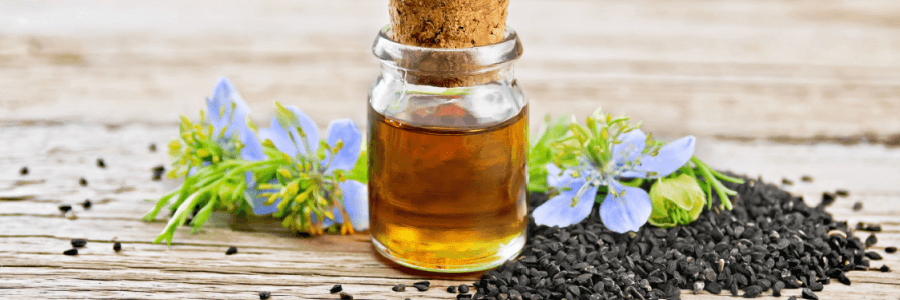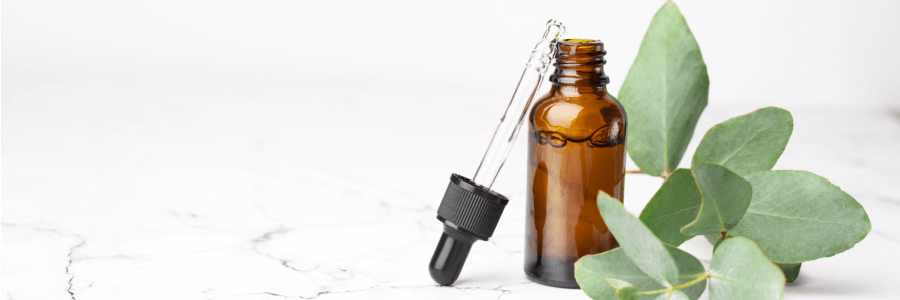Wheatgrass Powder Vs. Wheatgrass Juice Powder: What's The Difference?
|



Wheatgrass, also known as “couchgrass” is the newly sprouted grass of the wheat plant, Triticum aestivum. It is recognized in the health community today as a plant superfood with potent health benefits.
This article aims to address the main differences between wheatgrass powder and wheatgrass juice powder. We’ll dive straight in following the order below:
- What Is Wheatgrass?
- The Benefits
- How To Take It
- What Is Wheatgrass Powder?
- What Is Wheatgrass Juice Powder?
- Wheatgrass Powder vs. Wheatgrass Juice Powder
- Key Takeaways

What is Wheatgrass?
Have you ever been in one of those cafés or health food stores and seen a wheatgrass shot on the menu? That’s the same plant we’re talking about here.
Its use can be traced back all the way to the Egyptians over 5,000 years ago. They were said to have used the plant for its health and vitality.
The Western world was a little late to the party and didn’t start consuming the raw plant until around the 1930’s when a man named Charles Schnabel started to spread awareness about its benefits.
Since then, we have learned more about wheatgrass and what makes it the powerful superfood so many are consuming today:
- Contains chlorophyll
- Is a complete protein (contains all of the essential amino acids)
- Contains vitamins B, E, C, and K
- Rich in antioxidants like beta carotene
- Contains the minerals iron, calcium, phosphorus, magnesium, zinc, and copper
All of these components contribute to the potential benefits of drinking wheatgrass juice.
Health Benefits of Wheatgrass
Though evidence is lacking, proponents of wheatgrass claim it offers a broad range of health benefits.
For example, wheatgrass is said to boost the immune system, help the body detox, increase energy, improve digestion, promote weight loss, and even help lower cholesterol.
While research is limited to test-tube and animal studies, the results point to positive effects. Let’s take a quick look at a few of the more studied benefits:
-
High in Nutrients & Antioxidants
Studies confirm wheatgrass is high in nutrients and antioxidants that help fight oxidative stress and prevent against disease (1), (2).
You can read more about the research behind antioxidants and their benefits inside of this post.
Is Moringa Good For You? 5 Science Based Benefits
Wheatgrass also contains high levels of chlorophyll, the green pigment plants use to make food during photosynthesis, which is associated with many health benefits (3).
- May Reduce Cholesterol & Regulate Blood Sugar
Cholesterol and high blood sugar alike can contribute to illnesses like heart disease. Too much cholesterol can make your blood too thick. Meanwhile, blood sugar that is too high can damage your blood vessels and the nerves that control both the vessels and your heart.
Two different animal studies showed wheatgrass helped to lower total cholesterol and increase “good” cholesterol compared to the control groups (4), (5).
Two more animal studies saw wheatgrass significantly lower blood sugar in rats (6), (7).
- Can Help Reduce Inflammation
Inflammation is the body’s response to injury and infection. Some research suggests wheatgrass could be helpful in combating the body’s inflammatory response.
The component found to be most responsible in this are the high levels of chlorophyll (8), (9).
Finally, in a human study, patients with ulcerative colitis (an inflammatory disease of the large intestine) experienced reduced severity in rectal bleeding by drinking just under 1/2 cup (100 ml) of wheatgrass juice daily for one month (10).
At the end of the day, we need more research and human studies to be conducted to prove the positive effects of wheatgrass in humans. While the test-tube and animal studies are promising, looking at the effects on the human body is imperative to fully understanding the benefits and risks of consuming wheatgrass.
How To Take Wheatgrass
Wheatgrass is mostly consumed in liquid form aka those “shots” I mentioned earlier.
However, you can also purchase freshly grown grass, buy a wheatgrass kit to grow and harvest your own juice, or buy wheatgrass supplements such as wheatgrass whole powder or wheatgrass juice powder.
The powders are where some people get hung up on which to try because they don’t quite understand the difference between them.
Don’t worry, we’ll go over what each of these are next. Then we will highlight the main differences between the two to help you make an informed decision should you decide to add raw wheatgrass to your daily health regimen.
What is Wheatgrass Powder?
Wheatgrass whole powder is just what it sounds like – the edible parts of the plant ground into powder form. It is often added to smoothies or used for juicing. It also comes in tablets or capsules.
What is Wheatgrass Juice Powder?
Wheatgrass juice powder is harvested and ground into powder form just like the whole powder. However, before being powderized, it undergoes an additional process where the fiber and pulp of the plant is filtered out.
This results in only the juice, which is then dehydrated into a powder.
This process concentrates the nutrients from the wheatgrass and makes for an even more potent supplement.
For example, it is said that just one teaspoon of wheatgrass juice powder is comparable to anywhere from 6 to 10 shots of fresh wheatgrass juice.
Wheatgrass Powder vs. Wheatgrass Juice Powder:
What’s The Difference?
When you get down to the nitty gritty, the differences aren’t that grand.
Wheatgrass powder contains both soluble and insoluble fiber, which can help you get the recommended daily dose of fiber. You would also have to consume more whole powder to get the same amount of nutrients found in a smaller amount of juice powder.
If you already have enough fiber in your diet, the juice powder is a great choice. It is also delivers a higher concentration of nutrients.
Overall, the main differences are fiber and nutrient content. Wheatgrass juice does have more protein, calcium, and vitamin C than wheatgrass powder. However, it can have more carbs, sugar, and sodium, and zero fiber (11).
Key Takeaways
Wheatgrass is a popular and potent health food that can be consumed in a variety of ways. It has a wide array of benefits, however more research is needed to prove its effectiveness.
Wheatgrass powder contains a healthy amount of fiber while juice powder contains a higher concentration of nutrients and has no fiber content.
Regardless of the way you choose to add raw wheatgrass to your diet, you will definitely be providing your body with key nutrients that will hopefully lead to reaping some great benefits.
Medical Disclaimer
Please speak with your doctor or other licensed healthcare professional before beginning any new supplement including Wheatgrass. None of the content on this site is or should be considered medical advice. The purpose of this article is simply to highlight relevant research for those curious about the potential benefits of consuming Wheatgrass.

 Login
Login



The container of wheat grass juice powder once opened should be refrigerated or no
Can you drink this juice while taking the Black Seed Oil. I am taking vitamins as well
Looks like this is “leave a comment only” devoid of any answer to said comment.
A total waste of time? Perhaps … but what else have you got to do with your day?
So comment away!
Do you mix the poweder in just water? Or can you put it in coffee, tea, and protein shakes, smoothies?
I’m using all of your products. At 62, I’ve been on an age intervention program with The Angel Longevity Medical Center in California and Dr. Mathur for 4 years now. Your products fit right in with her advise!!
Not only super nutrition but the detox
benefits help our bodies eliminate disease causing toxins! I just added the Reike mushrooms. Hopefully your premium products help extend the length of my telomeres and help me to live a longer robust life. THANKS GUYS